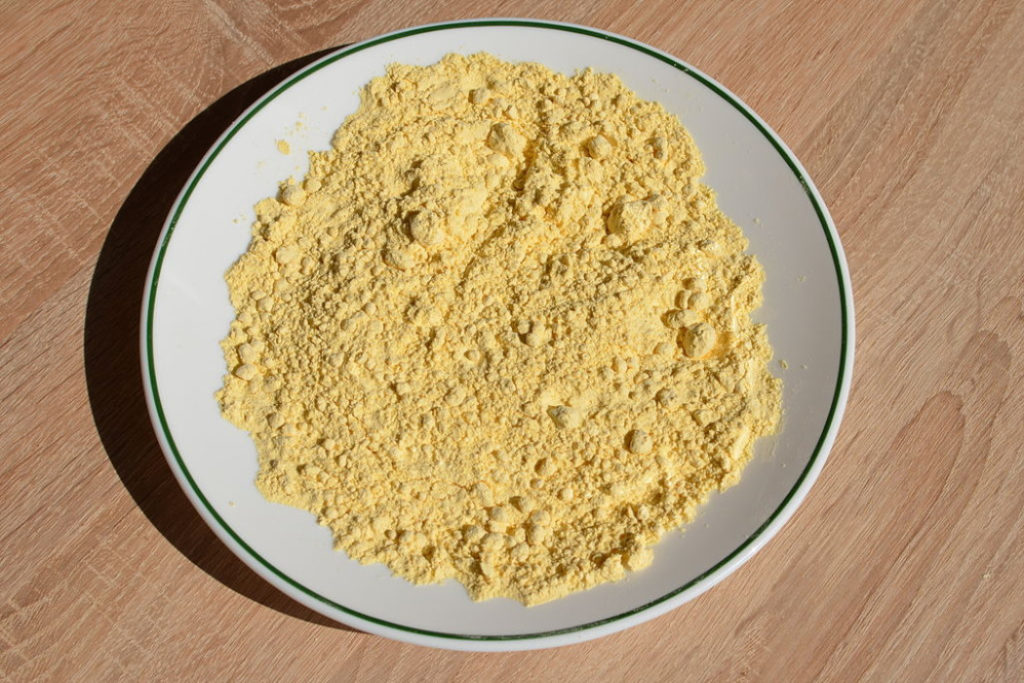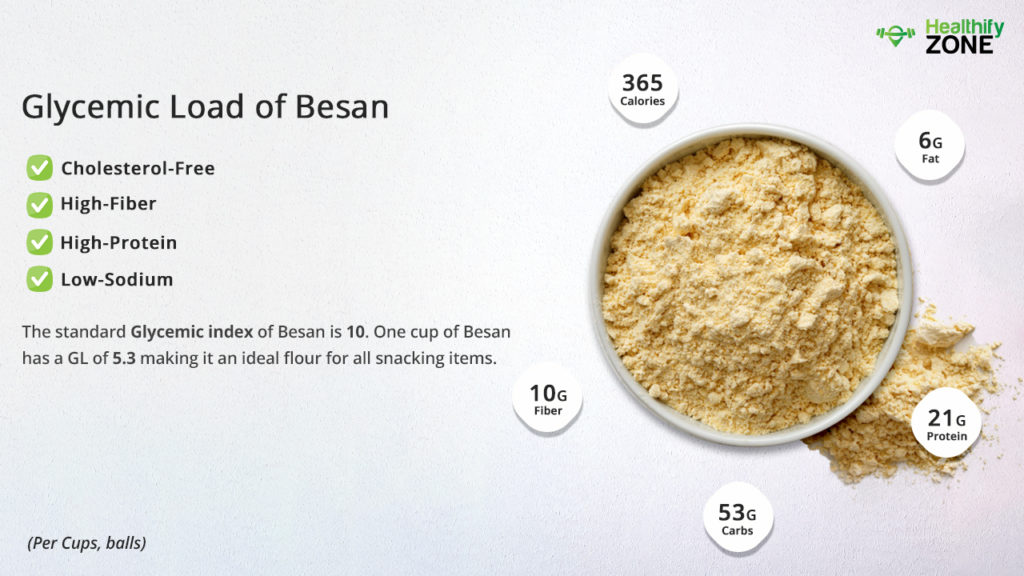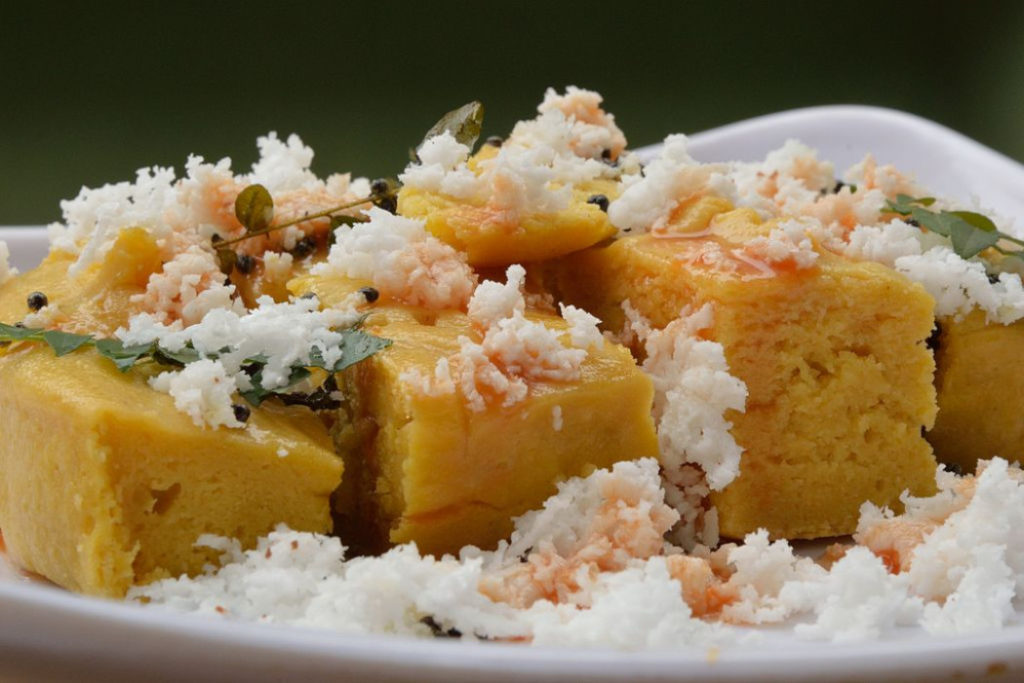Glycemic Load is a classification with which you can measure carbohydrate content of food with the rapidity with which it increases the blood sugar levels. Glycemic Index draws comparisons between foods that have the same amount of carbohydrates according to how they impact your blood sugar levels. It is a simpler way of making healthy choices. Glucose leads to a higher blood glucose response in comparison to fructose.
Besan is a pulse flour that is made by grinding chickpea. The International GI Tables found that the glycemic index of besan was 10. Besan is low in saturated fat and has a particularly low amount of cholesterol and sodium. It is great for people who want to lose fat- because of the high amount of protein present in it. It is an absolute powerhouse of nutrients.

Besan is a kind of flour that you can incorporate in several recipes and comprises healthy nutrients like
- Fiber
- Thiamine
- Folate
- Iron
- Phosphorous
- Magnesium
- Copper
- Manganese
How to Calculate Glycemic Load of Besan?
The standard Glycemic index of besan is 10. The high glycemic index of the foods helps in reducing the risks related to cardiovascular diseases. If we want to talk about diet, the key to prevent diabetes or any chronic illness is to distribute the carbohydrate consumption content throughout the day and manage the sugar levels in the body correctly—Besan has a low GI, and snacks made from besan too have low GI values but are filling in nature.
The Formula/Procedure For Calculation of Glycemic Index of the Besan :
GL = GI * carbs / 100
where
- GL – glycemic load;
- GI – glycemic index;
- and carbs – the amount of carbohydrates in the portion.

| SL.NO | BESAN BY WEIGHT IN (g) | GLYCEMIC LOAD |
| 1. | 100 g of Besan | 5.8 (low) |
| 2. | 250 g of Besan | 14.4 (medium) |
| 3. | 500 g of Besan | 29 (high) |
| 4. | 1 Kg of Besan | 58 (very high) |
| 5. | 1 Cup of Besan (92 g) | 5.3 (low) |
Is Besan Safe to Consume If You Have Diabetes?
The GI shows how quickly a food breaks down into sugar and can cause an increase in your blood sugar levels. The GI of besan is just 10. Chickpea has about half the carbs found in white flour. This, and the foods made of it, are low GI foods, meaning that they have a gradual effect on your blood sugar levels in comparison to white flour. Besan is great if you have diabetes, and you can easily incorporate it into your diet.
Can I Eat Besan During a Fat-Loss Diet?
You can eat besan during a strict fat-loss diet. If you are looking for good results, you should avoid having more than 250 g of besan per serving.

- A 250g serving of besan has a GL of 14.4 which is in the permissible levels.
- Besan leads to increased feeling of fullness, which causes you to feel less hungry.
Can I Eat Besan During a Low-Carbohydrate Diet?
You can eat besan during a strict low-carb diet. But, you have to be careful about the portion of besan that you consume. We suggest you not consume more than 100 g of besan per servings.
Is Besan High in Sugar?
A 100 g of besan serving has 58 g of carbs and 11 g of sugar. Although it is low on sugar, it is high in carbs. But, one thing to keep in mind is that the low GI of besan means that the carbs present would not cause a spike in blood glucose levels, and hence, can be incorporated into your diet.